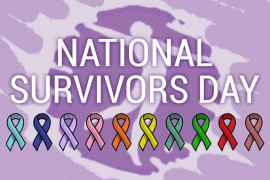Innovation across the African continent has taken a different turn as more young people are open to thinking out of the box, while applying creative ideas to already exist methods.
Pastoralism in Africa is characterized by a high reliance on livestock as a source of economic, social and physical wellbeing. Pastoralists make crucial decisions on where and when to move herds throughout the year to find adequate grazing in areas that cover thousands of square kilometers using traditional methods including indigenous knowledge, word of mouth, and scouts. While valuable, each have inherent limitations and decreasing reliability as climate and ecologies have witnessed dramatic changes. Inaccurate, delayed, or limited information can be devastating, with irreparable losses that have immediate and long‐term consequences for their livelihoods, well‐being, and even survival.
The Satellite Assisted Pastoralist Resource Management (SAPARM) program provides semi-nomadic pastoralists with digital maps of traditional grazing areas overlaid with current, satellite-derived vegetation information directly on their mobile device in order to improve migration decision-making. Project Concern International (PCI) successfully developed and tested the fusion of community mapping and satellite data integration by delivering paper-based SAPARM maps to pastoralists in Ethiopia demonstrating a 78% use rate and 47% reduction in herd mortality.
According to its baseline conducted by Notre Dame Initiative for Global Development, annual herd mortality rates in these areas have averaged 40% over the last three years in Ethiopia and 26% in Tanzania. This represents a $1,771 annual loss to a pastoral household in Ethiopia and $2,885 in Tanzania– a substantial asset loss equivalent to 27-38% of annual household income for families already on the edge of survival. With more than 225 million pastoralists on the African continent using traditional approaches for determining herd migration, the magnitude of this problem is immense. If the losses that PCI has witnessed hold true across the continent, it represents billions in losses to these country’s economies each year.
In response to the extreme loss pastoralists are incurring, PCI developed the Satellite Assisted Pastoral Resource Management. SAPARM is the fusion of continuously updated satellite vegetation imagery with community grazing maps. Through this project we intend to develop a mobile application to instantaneously deliver the synthesized grazing map to the matching seminomadic pastoralist’s mobile device for improved migration decision-making.
Intervention communities are first engaged in a one-time mapping process to identify and outline traditional grazing grounds on topographical maps. Once complete, a digitized version of the map is created and overlaid with a visual representation of Normalized Differential Vegetation Index (NDVI), which is a measure of photosynthesis. The raw data is derived from Meteosat10, a geostationary weather satellite above North Africa. Maps are then auto generated with the latest NDVI values every 10 days and delivered to the community via mobile application.
PCI completed a proof of concept that prototyped this innovation by developing the mapping and satellite data integration then tested our theory by delivering paper based SAPARM maps in an Ethiopian pastoral community. After less than one year, nearly 80% of pastoralists reported using the maps for migration decision-making. All users found the maps to be accurate in identifying adequate grazing areas and more than half the respondents felt the maps were now their most important source of information for migration decision-making. Herd mortality rates dropped by an average of 47% for all species of animals after introduction of the maps, as compared to the previous three years in the intervention community. A benefit cost ratio was calculated at 47.59:1.
PCI is currently undertaking an expanded field test on the use/impact of SAPARM in its current paper-based form. In addition to partnering with national governments and the World Food Program, PCI has garnered the support and investment of the US Agency for International Development and Google.org. Their support is funding the expanded testing of SAPARM in 27 communities in Ethiopia and Tanzania, with a total coverage area of over one million people. PCI is also working closely with a Dutch company, Hoefsloot Spatial Solutions on map/satellite data integration, the University of Notre Dame Institute for Global Development on conducting the RCT impact valuation, and University California San Diego’s Rady School of Management on a viable mobile application business model.
While SAPARM in its current paper-based state has demonstrated need, feasibility, and effectiveness, the next challenge is to develop a scalable delivery model. Currently, SAPARM map distribution requires email recipients (PCI or government) to print color maps and physically deliver them to remote villages through a cascaded protocol involving local government and community representatives. This continuous process is an investment in time, labor, and resources, susceptible to delays and breakdowns. For this reason, PCI would need to develop a mobile application for scalable and reliable SAPARM delivery corresponding to the expansion of 3G/4G coverage and smartphone uptake in Africa.
It intends to build a minimum viable product (MVP) mobile SAPARM application for $25,000 to test in Tanzania for feasibility and impact. The initial features of the mobile MVP application would link the user to their current community and corresponding SAPARM map file, as well as geo-locating the user on that map using the built-in GPS functionality on the smartphone.
Based on the success of this MVP, PCI plans to enhance the application for commercialization for an estimated $75,000. This version will be subscription based and layered on live and cached (downloadable) Google maps (which include more GIS features like roads, villages, conservation areas, etc.). Traditional grazing grounds for a single community of pastoralists can cover up to 22,000 square kilometers, a scale that, on paper, does not allow for details like ponds, streams, or even road names. The enhanced commercialized application will provide users with the ability to zoom to find surface water, among other land features. Additional application features considered include a rating system, geo-tagged picture sharing, and other communication forums and platforms, based on user want and need.
Source: stisolutions4sdgs.globalinnovationexchange.org




